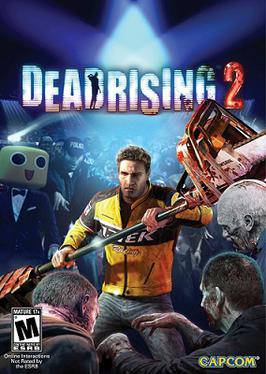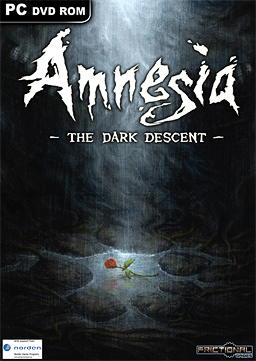With Halloween just around the corner, many of us are asking, "What is scary?". Humans, like most animals, react to perceived danger in one of three ways: Fight, Flight, or Paralysis (Or as Walter Bradford Cannon put it, "fight-or-flight-or-freeze").
"Fight or flight" is a more common factor in games than in films. Unlike films, where the audience is just along for the ride, games lend the participant a certain amount of control, allowing the "fight or flight" choice to be made. Film makers attempt to keep their victims participants in a constant state of shock, or "paralysis", raising their anxiety to astronomical levels.
For games, it depends greatly on how much control participants are given. Action horror games tend to be a more tame experience, as the makers are inclined to give the participant a means to battle the perceived fear, returning the "fight" option missing from films. Survival horror games on the other hand, tend to be more conservative with the amount of control they allow participants.
Case Study: Arcade Action Horror Game - Dead Rising (1 and 2)
The game Dead Rising is an arcade style action horror game, in which the participant wanders around an enormous mall, filled with thousands of zombies, and experiments with ways on how to most creatively dispose of them. There isn't a lot of fear or anxiety to be had when the game character is walking around a well lit mall with two chainsaws strapped to a hockey stick (as shown in the game's cover art). Because of the lighthearted nature of the game, this gives players more room to relax and have fun. Read more about it in IGN's review.
What makes Dead Rising different from many in the horror genre is the sense of power that participants have. They can kill hordes of zombies with a dizzying array of weaponry, and even in the game-world, it is all just a game (a reality TV game-show).
 |
| Dead Rising removes the possibility of running, but compensates by giving participants an abundance of power, making it far less scary than others in the genre. |
Case Study: Survival Action Horror Game - Resident Evil (1-6)
The Resident Evil franchise is well known in the gaming community as a scary, and fun, game. The game makers limit the ability of the participants to "fight", by limiting the amount of ammunition and guns. They also limit the amount of "flight" the participant can do by only providing a small amount of 'health', making encounters with zombies a bigger risk.
 |
| The Resident Evil franchise is primarily a shooting game, with a secondary focus on an RPG survival element. |
Case Study: Survival Horror Game - Amnesia: The Dark Descent
Amnesia is a relatively new take on the horror game genre, giving participants little or no ability to fend off attack. Most of the gameplay is puzzle based, but with the constant threat of being attacked by the various monsters. The only options when faced with a monster, is to run, hide, or... The game is as renowned as the other two games, but Amnesia is famous for the terrifying effect it has on people. Just have a look at the video below if you don't believe it.
 |
| Amnesia: The Dark Descent is a game where you have almost no power and your only option for many situations is to hide. |
WARNING: CURSING AHEAD. (Audio and in Subtitles)
Sources:
Walter Bradford Cannon (1915). Bodily Changes in Pain, Hunger, Fear and Rage: An Account of Recent Researches into the Function of Emotional Excitement. Appleton-Century-Crofts.IGN. Onyett, Charles. Dead Rising Review. Updated August 7, 2006, Retrieved October 26, 2012, from http://www.ign.com/articles/...
IGN. George, Richard. Resident Evil 6 Review. Updated October 1, 2012, Retrieved October 26, 2012, from http://www.ign.com/articles/...
IGN. Amnesia: The Dark Descent. Retrieved October 26, 2012, from http://www.ign.com/games/amnesia-the-dark-descent/...



